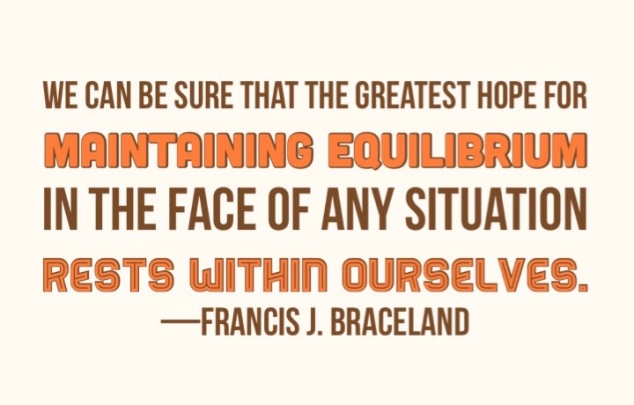![]()
I’ve worked with folks with autism for many years and in a few different capacities—as a teacher, a tutor, a social group facilitator, a staff developer, and as a colleague. I’ve come to see the neurodiversity movement as a crucial perspective to understand and appreciate the differences in autistic and neurotypical thinking. There’s been a lot written on this topic, and I’ll leave the bulk of that discussion to terrific self-advocates like Karla Fisher and Nick Walter among others.
One concept has emerged as central in conceptualizing autism and supporting autistic individuals: finding a balance.
For example:
- There is much discussion in the “field” about finding a balance between viewing autism as a difference and a disability (Judy Endow has a great post about this)
- In educating students with autism, teachers need to find a balance between providing structure and encouraging flexibility.
- And regarding support for autistic folk with social challenges, there’s the issue of finding a balance between understanding neurotypical thinking and embracing autistic thinking.
I’ll share more on each of these ideas soon, but I’d like to start with a concrete example.
Finding a Balance Between My Wants and Other People’s Wants

One of the most fundamental balance challenges in any social interaction is to figure out how much to jump in / share / contribute / participate, and when to hold back / listen / take a pause.
When we’re with a group of people (one other or several) and we’re interacting (working on a project or having a conversation) we constantly have to be balancing what we want with considering what other people want. If we hit either extreme, we can expect problems to arise.
Only My Wants
On the one extreme, if you focus only on your wants, ignoring the wants of others, the risk is that you become dominating. In a group project, you don’t get to hear other people’s ideas and contributions, which may add value to the project. When hanging out with friends, your ideas don’t get to be elaborated upon, questioned, or challenged if you’re the only one talking. People frequently get frustrated and bothered when a group member becomes dominating and they don’t get an opportunity to add their thoughts.
Only Other People’s Wants
On the opposite extreme, focusing only on other people’s wants means that you become a passive member of the group. In a project, other people’s plans take over. And when hanging out, no one gets to learn anything about you. People may think of you, the passive participant, as not doing your share of the work, or that you don’t have anything interesting to contribute.
What’s the Right Balance?
The challenge is that the “correct” balance is not necessarily right in the middle.
Different contexts call for the scale to be tipped differently. In a school group in which no one is talking, it may be helpful to focus on your ideas more for some time. In English class, if you only have 20 minutes to complete a group poster, you might need to tip the scales towards your wants to get things started. In a really large group of friends hanging out, there may be a need to focus on other people’s wants. Imagine if seven of your friends want pizza and you want falafel. Assuming you don’t have any dietary restrictions to stop you from eating pizza, it may make sense to focus on the other people’s wants for this dinnertime decision.
To find the right balance, you have to use the context: Ask yourself, Who is with me? What’s my relationship with them? What’s happening right now? How much have I been focusing on my wants in the past couple minutes? the past couple days?
Finding the “right” balance is about tipping the scales slightly in one direction or the other in order to enjoy yourself and allow others to enjoy themselves, too.
Only for Autistic People?
NO! To be very clear, these challenges are something that all people—including neurotypicals—struggle with from time to time. I’ve had difficulties with friends and colleagues that stem from other neurotypical people’s issues with this exact challenge. I admit that I have a hard time with this balance myself and often have to work to tip the scale towards focusing on other people’s wants.
Going Forward
Hopefully this framework can be a helpful concrete visual for autistic people to navigate the predominantly neurotypical social world, as well as for neurotypical allies—professionals, parents, friends—to support autistic folk in their lives, AND to improve upon for themselves.
I plan to share more thoughts on context, language, collaboration between autistics and neurotypicals, and many more examples of balance challenges. I welcome thoughts and feedback, particularly from autistic self-advocates.
Thanks. And Happy New Year.
Aaron



Nice post, Aaron! Indeed, it’s all about balance. In my talks on autism and happiness I talk a lot about the balance between support and challenges… And our European concept of disability (which is pretty unknown in the US) is all about balance too…
LikeLiked by 1 person
great post Aaron! balance is so person specific and context dependent and you capture that idea very well! Looking forward to future posts!
LikeLiked by 1 person